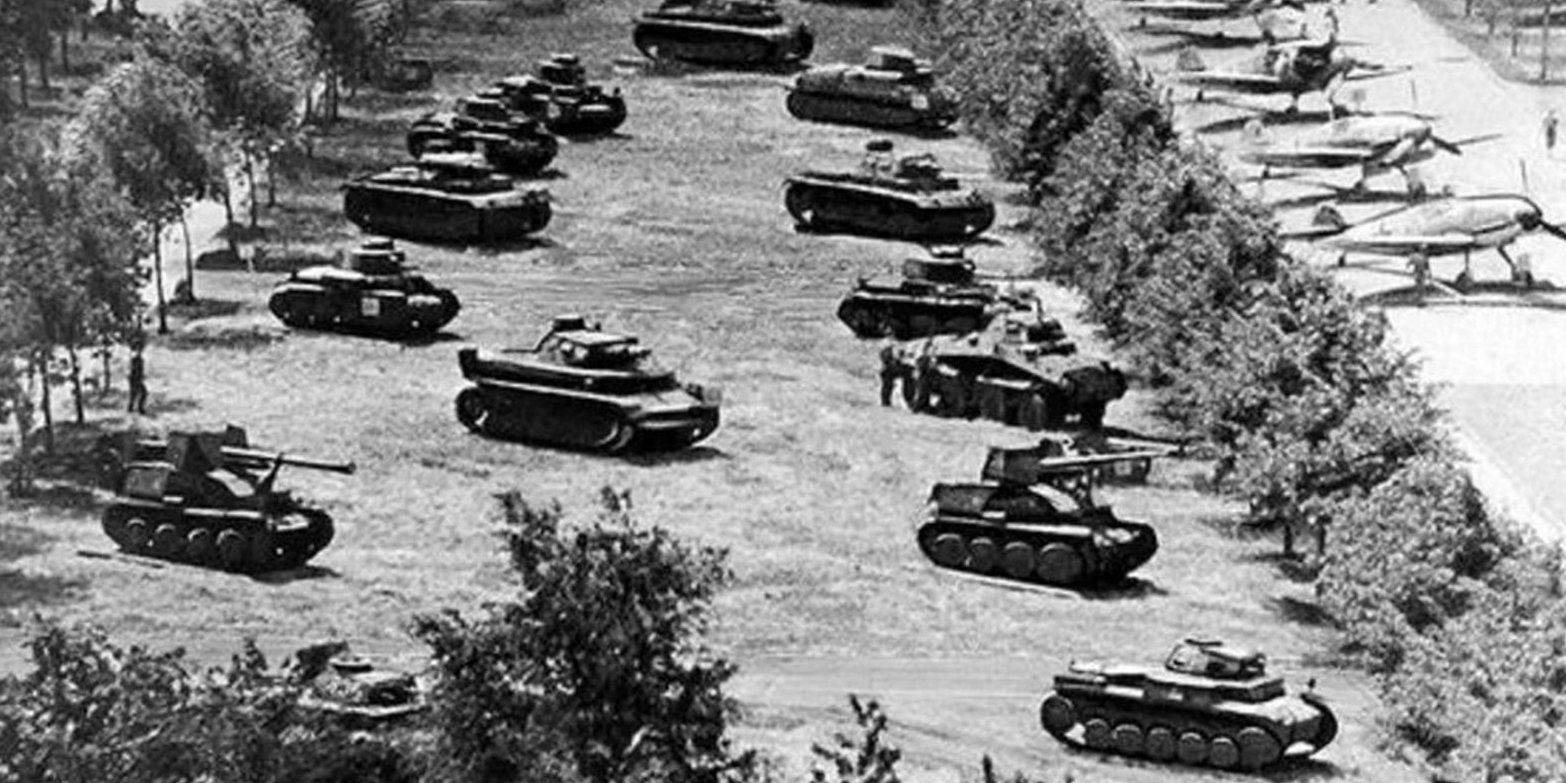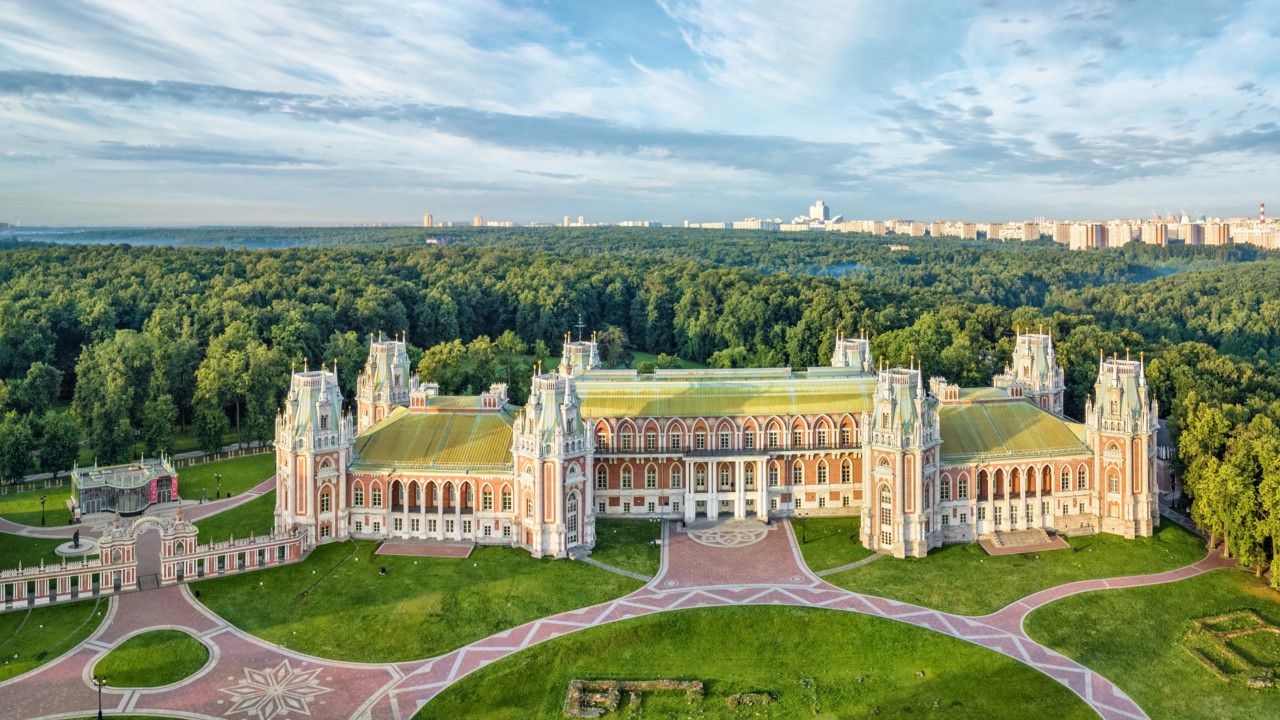Gorky Park never closed during the war, French pilots were treated in Sokolniki Park, and fighters took off from Khodynskoye Polye (Khodynka) airfield. Natural areas made a substantial contribution to the defence of Moscow. This story describes life in the parks in 1941–1945, as captured by the official portal of the Moscow Mayor and Moscow Government.

The people of Moscow always liked to relax in local parks, many of which were built in the 1930s. At that time, the local authorities laid out new parks, improved old ones, installed fun rides, and built theatres, stages and houses of culture.
When the Great Patriotic War began, many natural areas were converted into military installations. They shielded the city from enemy air raids, and anti-aircraft guns, training camps and hospitals were deployed among trees and on paths.
For example, Babushkinsky Park accommodated an anti-aircraft battery. The headquarters of the 251st Anti-aircraft Artillery Regiment, a medical unit and facilities for repairing artillery systems, motor vehicles and tractors were located in what is now Mitino Landscape Park. A school for training secret agents was located in Izmailovsky Park which was also home to a mortar regiment. Anti-aircraft guns in Perovsky Park shielded the Perovo railway station. In the summer of 1942, officers and soldiers of the 40th Order of the Red Banner Yenakiyevo-Danube Suvorov Guards Rifle Division gathered in Hermitage garden before they were later redeployed to the front.
How Gorky Park shielded the city from enemy bombers
The city’s Park of Culture and Leisure opened in 1928 and was eventually named after writer Alexei “Maxim” Gorky. The park remained open to visitors when the war began and hosted exhibitions of enemy military equipment, as well as grenade-tossing and bayonet-thrusting competitions. Located in a summer house in Neskuchny Garden, the Park’s Military Town for Young Pioneers hosted Ready for Labour and Defence, target-shooting and grenade-tossing competitions. The children also camped overnight on Vorobyovy Gory (Hills).
Besides boosting Muscovites’ morale with its exhibitions and competitions, Gorky Park boasted a 35-metre parachute tower that served as a fun ride before the war. In 1941-1945, it acted as an air defence observation post and made it possible to spot enemy aircraft approaching the capital. The sooner they were sighted, the faster anti-aircraft batteries would swing into action along Krymskaya Embankment.
Anti-aircraft batteries were also deployed in the park, one of them in a rose garden with a fountain, which was one of the most beautiful local sites. The rose garden was almost totally destroyed during enemy air strikes. Nazi planes wiped out arches, benches and a majolica fountain. This area was partially rebuilt in the early 1950s. Gorky Park suffered grievously during the war. In addition to the rose garden, the famous sculpture Girl with an Oar and a cinema, designed by Brazilian architect Rodrigo da Costa, were destroyed. Despite the repeated air strikes, Gorky Park never closed even for a day. Musicians performed pieces by Russian and Soviet composers, and literary soirees were held each Tuesday. The Park’s Green (Zelyony) Theatre hosted public lectures and concerts.
Vorontsovsky Park: air defence and vegetable gardens
The Moscow defence zone also included Vorontsovsky Park. The second line of the 9th Barrage Balloon Regiment was later deployed here to beef up the capital’s air defence.
In April 1943, vegetable gardens appeared at the Vorontsovo Estate, cultivated by employees of the Pushkin State Museum of Fine Arts.
Training and treating soldiers and feeding city residents in Sokolniki Park
Sokolniki Park was open to visitors until October 1941. It hosted training sessions, as well as a track-and-field race on 5-6 October, just before closing. The race involved about 18,000 people, including many orderlies, medical nurses and instructors as well as members of the People’s Volunteer Corps. Many park employees joined the Red Army, and some of them received medals, For the Defence of Moscow.
In January 1942, Evacuation Hospital No. 5019 opened at the park’s tuberculosis sanatorium and functioned until April 1944. In March 1942, the Nazis were hurled back from Moscow, never to return, and the city has faced no major threats since then. Sokolniki Park reopened and started working for the front. First, the decision was made to manufacture wooden ammunition crates in the park. Lotteries were also organised, and people were told to buy war bonds. All the funding raised was used to support the Red Army. Sokolniki also hosted 232 lectures on history and propaganda lectures during the war.
In October 1942, a full-fledged hospital of the Moscow Air Defence Front was established in Sokolniki Park. Its personnel treated 19 pilots of the Normandie-Niemen Fighter Division. General Charles de Gaulle, the future President of France, visited the hospital in December 1944.
In 1943, the first vegetable gardens were established in the park, with cabbages and potatoes growing on an area of six hectares. The model Sokolniki vegetable garden helped feed factory workers and the families of Red Army personnel.
A firing range opened between the park’s 6th Luchevoy Prosek and Maisky Prosek, where soldiers learned to shoot machine guns and other weapons. In 1944, a commando squad consisting of professional athletes was established at the local skiing station.
The firing range is long gone, but an armoured machine gun pillbox survives near Maisky Prosek. A balustrade, formerly containing targets for grenadiers, is located near the symphonic stage.
Tsaritsyno: Defencive positions near Lenino

In the 1930s, the township of Lenino was located in what is now Tsaritsyno Museum-Reserve. During the war, its residents helped defend Moscow, enlisted and worked for the home front.
Local residents built additional defensive positions. An eight-kilometre-long line of defence linked Tsaritsynskiye Ponds with the Pererva railway station. Firefighting companies consisting of Young Communist League (Komsomol) members also took part in the construction project.
“Company members dug moats near Lenino-Dachnoye and installed anti-tank obstacles on local streets. This was really hard work. For days and nights, we patrolled the district’s streets, while lorry convoys, supply trains and collective farm cattle moved inexorably along,” a Komsomol member later recalled.
The military placed an anti-aircraft gun in Tsaritsyno Park and repelled Nazi air raids on Moscow. A military transceiver station was located not far from what is now Orekhovo metro station. A military hospital operated in Tsaritsyno until the spring of 1942, treating also local residents wounded during air strikes.
Both fields near Bolshoi Tsaritsynsky Palace became vegetable gardens. Women and children planted potatoes, carrots, cabbages and turnip fodder there. According to eyewitnesses, potatoes were almost everywhere, replacing flowerbeds, growing on wasteland and roadside verges.
The Nazis bombed this area almost daily, with the locals hiding in trenches and dugouts. A bread/grain elevator was destroyed during the first air raid. Enemy planes also tried to demolish a bridge across a ravine that served as a route for medium tanks.
Fili Park: one of Moscow’s last defensive positions
Located in western Moscow, Fili Park became part of the capital in 1935. One of the last lines of defence passed here during the Great Patriotic War. Pillboxes symbolising the park’s wartime past survive to this day.
When the war began, the rear area of the 1st Rifle Regiment of the Moscow Defencive Area’s Western Group was located here. It consisted of four “extermination” battalions from Moscow’s Sovetsky, Tagansky, Baumansky and Moskvoretsky districts. These battalions were to fight German paratroopers and commandos. Later, the 1st Rifle Regiment became part of the 4th Moscow Rifle Division that fought near Rzhev, on the Kursk Bulge and eventually liberated Ukraine, Poland and Austria.
Khodynka Field and fighters
Although Khodynskoye Polye Park was established fairly recently, the area accommodated Russia’s first airfield, which was completed in 1910. During the Great Patriotic War, Red Army aircraft flew tens of thousands of combat missions from the Frunze Central Airfield. Khodynskoye Polye became one of the main elements of Moscow’s air defence system.
The first dogfight involving the airfield’s planes took place on 22 July 1941. On that day, the people of Moscow saw Nazi bombers for the first time, as over 200 (222) of them approached the city. Fighters serving with the 1st Air Defence Corps flew 178 combat missions from Khodynskoye Polye, took part in 26 dogfights and downed 20 enemy planes. Only 20 enemy bombers managed to reach Moscow.
In all, fighters operating from this airfield downed 1,392 aircraft, with anti-aircraft guns destroying another 540. From 22 July through 20 December, only 207 German bombers were able to break through and attack the Soviet capital.
After the Red Army managed to defend Moscow, the airfield helped maintain communications with other Allied nations, members of the Anti-Hitler Coalition. Winston Churchill’s plane landed at Frunze Central Airfield in 1942 and 1944.
Throughout the war, the airfield received US, British and French military missions. The last military aircraft carrying the Soviet copy of Germany’s unconditional surrender act landed at the Central Airfield early in the morning of 9 May 1945. The Victory Banner of Victory was also delivered here sometime later.




